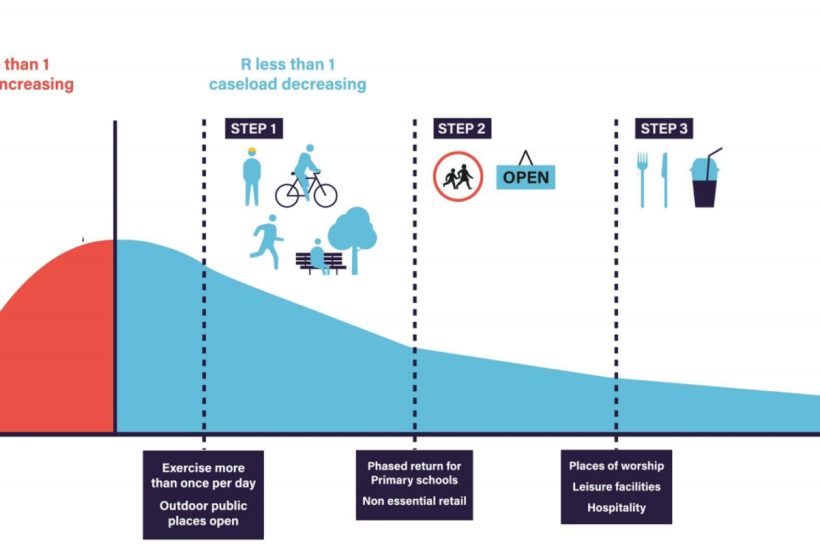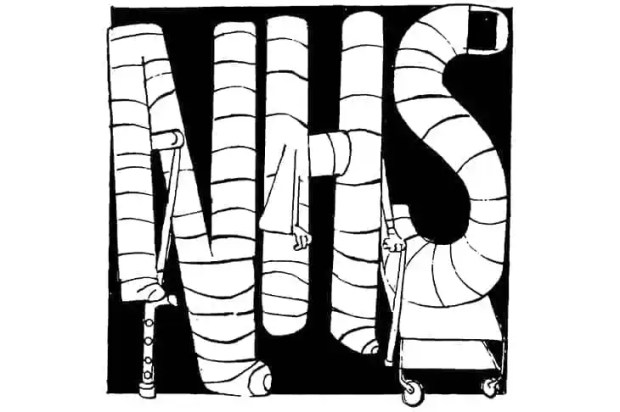Boris Johnson’s address on Sunday was always going to be challenging. The effects of Covid-19 – in terms of its horrific death toll and the drastic measures we’ve taken to prevent more loss of life – meant it was one the biggest and most important political statements in living memory.
But what was also required was transparency and the explanation of very difficult scientific and medical concepts. In his statement, Boris Johnson drew attention to the R value, which he said was key to the changing lockdown measures over the coming weeks. If it crept above 1 this meant Covid-19 was spreading and the lockdown measures would remain in place, and if it fell below 1 it was an indication we were beating the virus. The problem is the R value is essentially guesswork.
As you would no doubt expect, science and its concepts are rarely straightforward or clear-cut. A classic example of this is social distancing. The 2m social distancing rule in the UK is based on SAGE’s opinion, the WHO (not an organisation, admittedly, which has covered itself in glory during this pandemic) recommends1m and most of the medical evidence suggests around 1m is effective to stop the spread of the disease. Yet I have even seen it recommended that people stay up to 6m apart. How society operates with a 6m figure is anyone’s guess.
This illustrates scientific uncertainty but also the pitfalls of trying to translate medical evidence into policy and real life. When governments communicate social distancing measures, there are no caveats: only a distance of 2m will save lives. But when you speak with such certainty, it becomes very hard to reverse policies when then may cause harm. This is also true of the R value.
R values are standard measures for epidemiologists and those involved in public health and infectious diseases. But it is a figure reliant on assumptions – and any value communicated is essentially an opinion based on these assumptions, rather than fact. When it became clear that our route out of lockdown was dependent on keeping the R value below 1, I was somewhat surprised. Put simply, this concept is only really valid in a population in which everyone is completely vulnerable to the disease.
As a population we are not all equally vulnerable to Covid-19. The infection has been present for some months, and it is highly unlikely that someone can catch it twice. Which means the surest and simplest way to reduce the R number for the virus is to catch it. This means fewer potential hosts and the infection eventually dies out: the principle of herd immunity. This is how infections have been managed in the past. There seems to be no acknowledgment that a significant number of people have already had Covid-19 and either recovered or never had any symptoms at all.
Population studies in Iceland and areas of California and New York state suggest their infection rates have been many times above the documented symptomatic figures in those areas. This suggests that mild cases and asymptomatic infections of Covid-19 are common, particularly in those who are otherwise well. If so, is it really such a problem for healthy people to contract this virus as long as suitable measures are in place to protect the more vulnerable? Does it actually matter that much if the R value is above 1 in otherwise healthy people?
In early February, there was an outbreak of Covid-19 on the Diamond Princess cruise ship. Of the 3,711 people onboard, around 700 people were ultimately infected. This sounds like a lot, but in fact there can be no more ideal environment for an infection than in the closed and internal space of a cruise ship with an older age demographic onboard. But even in ideal conditions, just under 20 per cent of those on the ship tested positive, and of those a substantialnumber were asymptomatic.
What is the reason for this difference in severity ranging from no infection at all, mild or asymptomatic infection right through tragically to death? Experience from a close relative of Covid-19 is instructive. Covid-1, or Severe Acute Respiratory Syndrome (SARS) as it was better known, was the original novel coronavirus. It began in the far East in 2002 and continued into 2003, infecting around 8,000 people and killing 774. That made it much more deadly in relative terms than Covid-19, but then it disappeared.
There were multiple reasons for this. As a more ‘deadly’ infection its hosts may have been less able to transmit it to others. But what was also clear to local doctors was that genetics also had some role, with certain genetic configurations possibly conferring greater innate immunity. That means that people could be more or less likely to develop SARS based on how our immune systems are built. Obviously, it is speculation as to how relevant this is to Covid-19 but it is interesting that there have been very real observations in Covid-19 of differing severities of the disease and differing levels of mortality across the population as a whole. Clearly this question is yet to be fully answered but it reflects that a single R value cannot be truly accurate for us all and that if we assume that everyone is equally capable of developing Covid-19, in contrast to Covid-1, then this artificially inflates the R value. This inaccuracy could potentially be the difference between bringing us out of lockdown or keeping everything closed down.
This pandemic has been extremely serious and tragic for many thousands of people, but it has not yet overwhelmed the NHS, the stated original reason for lockdown. If we continue to overestimate the present threat of Covid-19 we should be clear that we are basing these decisions on scientific opinion, rather than a measure that is in fact subject to wide interpretation.
Got something to add? Join the discussion and comment below.
Get 10 issues for just $10
Subscribe to The Spectator Australia today for the next 10 magazine issues, plus full online access, for just $10.




















Comments
Don't miss out
Join the conversation with other Spectator Australia readers. Subscribe to leave a comment.
SUBSCRIBEAlready a subscriber? Log in